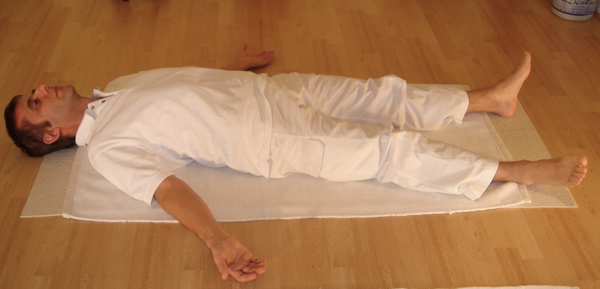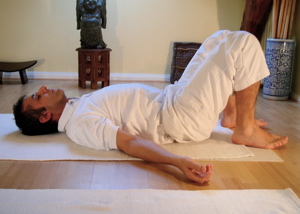
High Blood Pressure is a tricky condition. Most people who develop the advanced level symptoms of this condition do not even notice the early signs. “77.9 million (1 out of every 3) adults in the United States have high blood pressure,” says a report by the American Heart Association.
However, headaches and sleep deprivation are considered to be some of the early symptoms of High Blood Pressure.
If you exert the symptoms mentioned above, it is advised to consult a physician before following a non-medical treatment option like yoga for high blood pressure.
Once your physician gives a thumbs up, you can begin practicing some tried and tested yoga routines to relieve stress, lower the blood pressure, and boost your metabolism in a natural way. Let’s have a look at some research done on yoga on high blood pressure.
What Does the Research Say?
Yoga is being practiced widely in the western part of the world. It not only improves your overall health but also helps you fight life-threatening diseases like High Blood Pressure, or also known as Hypertension.
A study was conducted by Long Island University to measure the effects of Yoga practice on systolic and diastolic blood pressure in individuals with High Blood Pressure.
Adults over the age of 18 who suffered from prehypertension or Hypertension were called upon and were asked to practice yoga routines like Pratyahara, Dhyana, Samadhi, and Dharana. The effectiveness of yoga was measured by checking the systolic and diastolic blood pressure of the participants.
They concluded that yoga could help a patient with Hypertension reduce four mmHg (systolic and diastolic) blood pressure. 4mmHg is a significant reduction. However, they didn’t recommend a particular type of yoga routine.
The study also states that the type of yoga you perform is not essential. Any yoga that reduces stress levels can be performed along with the consumption of medication prescribed by the physician. Let’s have a look at some Yoga poses to lower blood pressure.
Tried and Tested Yoga Poses for High Blood Pressure
1) Hero Pose
It is always good to begin the yoga routine working with the lower body first. Hero Pose or also known as Virasana in Sanskrit is beneficial for your legs, knees, and hips.
Step 1:
To perform this yoga pose for High Blood Pressure, you will need a yoga mat and a foam block (you can also fold a blanket or towel instead). To begin this pose, kneel. Put your weight partially on your knees and feet.
Step 2:

Next, separate your feet so you can rest on your buttocks in the area between them. If you feel uncomfortable sitting in this position (which is expected for a beginner yoga practitioner), place the foam block under your buttocks. Hold this position for 5-6 deep breaths. Let go and get back on your knees again. You can repeat this pose 5-6 times per session.
Also Read – Best Yoga Mat for Bad Knees
2) Downward Facing Dog Pose
Downward Facing Dog also goes by the name Adho Mukha Svanasana. This pose is primarily a part of Vinyasa Yoga but can also be performed on its own. Vinyasa Yoga can be quite challenging to perform for a person with High Blood pressure as breathlessness is a major symptom of this condition.
Step 1:
A downward-facing dog is to be begun by getting in a tabletop position. In other words, the tabletop is the default position for this pose. Let your hands, knees, and feet bear all the weight. Spread your fingers wide apart like a starfish. Make sure your core is stable. You can do this by tucking your belly in and keeping your buttocks tight.
Step 2:

Next, gently lift your knees and face downwards. Lift your hips as high as possible. Touch the top of your head to the floor and look straight at your feet. You can refer to the above picture.
This posture appears like a dog standing in a neutral position with their face directed downwards. Hence the name downward facing dog. Perform this stretch 5-6 times per session.
3) Legs up the Wall Pose
Legs up the wall pose, also known by its Sanskrit name Viparita Karani is one of the fundamental asanas of Hatha Yoga. Ideally, this pose is performed by lifting your legs up without any support.
Initially, yoga practitioners did not use a wall or any other vertical surface for support. But considering the challenging nature of this pose, it is advised for most beginner yoga practitioners to do it with a wall for support.
Step 1:
Sit near a wall with the side of your hip touching its surface. This starting position is safer. Even someone with lower back problems can transition from this position to their legs being lifted against the wall.
Step 2:
As you might have guessed, the next step is to fall back on your back and let the momentum lift your legs. Use the wall for support. Make sure your buttock is touching the surface of the wall.
Step 3:
Hold this pose for about 15 seconds and continue to breathe. Also, tuck your belly to stabilize your core. After 15 seconds, get back to the default position. Repeat this pose 5-6 times per session.
4) Corpse Pose
Corpse Pose is also known as Shavasana in Sanskrit. This pose is generally performed at the end of a Yoga session.
Needless to say, Corpse Pose is one of the most comfortable yoga poses for people with High Blood Pressure. Just make sure you perform it at the end of a session and not at the start or in between. It will make you forget all your worries, aches, and pains.
Step 1:

Lie on your back with your knees bent. Compose your lower body and make sure your hips, spine, and neck are correctly aligned. Once you feel good to go, let your legs loose and straighten both your knees.
Keep your feet half a feet wide or as much as you feel comfortable. Open your arms and let your shoulders relax. It is recommended to perform this pose lying on a yoga mat and not on the bare floor.
Step 2:

For those with back problems, there is a modified version of Corpse Pose, which involves keeping your knees bent. Kindly refer to the above image.
Step 3:
As you lay on the mat, start breathing deeply and scan your body, beginning from the toe and ending at your forehead. Scan your body 5-6 times. Next, relax and get up by bending your knees first.
Conclusion
These are the best yogasana poses for High Blood Pressure. For someone with an average body and no significant injuries, three-four sessions a week should be ideal. However, performing yoga just once a week is also beneficial for those with physical limitations due to injuries.
